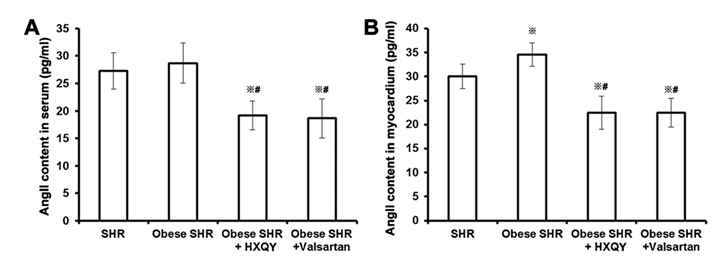Animal Models of Hypertension
Hypertension is identified traditionally as persistent high blood pressure (BP) and is involved in dietary, genetic and environmental factors (or more likely a combination of the three). Persistent hypertension may cause structural and functional changes in the heart, such as cardiac remodeling, myocardial systolic dysfunction and heart failure. It mainly include essential hypertension and secondary hypertension.
At present, hypertension is the most common reversible risk factor for cardio-cerebrovascular diseases. For example, about 70% of cardiovascular mortalities is associated with hypertension. Hypertension is currently a growing public health problem worldwide. However, the exact mechanism of hypertension leading to cardiovascular disease remains unclear.
Creative Bioarray focuses on drug research and development services and helps customers evaluate the drug efficacy and study the associated pathological mechanisms of hypertension by associated models.
Animal models of hypertension include but not limited to:
- Primary Hypertension Model
- Secondary Hypertension Model
Species available
- Rat
- Mouse
Our Capabilities
- We screen novel test compounds targeting hypertensive.
- Blood pressure (BP) was monitored by tail-cuff.
Assays available
- PK/PD collection
- Pathological evaluation
- Cytokine analysis
- ECG
- Blood pressure monitoring
With extensive experience in the field of hypertensive, we are confident to help you to overcome any upcoming challenges. Our experts are fully capable of customizing our protocols and assays to meet your specific needs. With our help, we wish to facilitate your research with high efficiency.
Study examples
 Figure. 1. Effects of HXQY decoction on Ang II concentrations in plasma and myocardial samples of obese SHRs. (A and B) Experimental procedures were the same as in Fig. 1. After 8 weeks of treatment of SHRs, the concentrations of Ang II in peripheral blood (A) and left ventricular myocardium (B) were determined by ELISA. n = 9 for each group; ※P < 0.05, compared with the control SHR group; #P < 0.05, compared with the Obese SHR group.
Figure. 1. Effects of HXQY decoction on Ang II concentrations in plasma and myocardial samples of obese SHRs. (A and B) Experimental procedures were the same as in Fig. 1. After 8 weeks of treatment of SHRs, the concentrations of Ang II in peripheral blood (A) and left ventricular myocardium (B) were determined by ELISA. n = 9 for each group; ※P < 0.05, compared with the control SHR group; #P < 0.05, compared with the Obese SHR group.
Quotation and ordering
If you have any special needs or questions regarding our services, please feel free to contact us. We look forward to cooperating with you in the future.
Reference
- Stujanna E N, et al. Rev-erb agonist improves adverse cardiac remodeling and survival in myocardial infarction through an anti-inflammatory mechanism[J]. PLoS ONE, 2017, 12(12):e0189330.
For research use only. Not for any other purpose.
Disease Models
- Oncology Models
-
Inflammation & Autoimmune Disease Models
- Rheumatoid Arthritis Models
- Glomerulonephritis Models
- Multiple Sclerosis (MS) Models
- Ocular Inflammation Models
- Sjögren's Syndrome Model
- LPS-induced Acute Lung Injury Model
- Peritonitis Models
- Passive Cutaneous Anaphylaxis Model
- Delayed-Type Hypersensitivity (DTH) Models
- Inflammatory Bowel Disease Models
- Systemic Lupus Erythematosus Animal Models
- Oral Mucositis Model
- Asthma Model
- Sepsis Model
- Psoriasis Model
- Atopic Dermatitis (AD) Model
- Scleroderma Model
- Gouty Arthritis Model
- Carrageenan-Induced Air Pouch Synovitis Model
- Carrageenan-Induced Paw Edema Model
- Experimental Autoimmune Myasthenia Gravis (EAMG) Model
- Graft-versus-host Disease (GvHD) Models
-
Cardiovascular Disease Models
- Surgical Models
- Animal Models of Hypertension
- Venous Thrombosis Model
- Atherosclerosis model
- Cardiac Arrhythmia Model
- Hyperlipoidemia Model
- Doxorubicin-induced Heart Failure Model
- Isoproterenol-induced Heart Failure Model
- Arterial Thrombosis Model
- Pulmonary Arterial Hypertension (PAH) Models
- Heart Failure with Preserved Ejection Fraction (HFpEF) Model
-
Neurological Disease Models
- Alzheimer's Disease Modeling and Assays
- Seizure Models
- Parkinson's Disease Models
- Ischemic Stroke Models
- Acute Spinal Cord Injury (ASCI) Model
- Traumatic Brain Injury (TBI) Model
- Hypoxic-Ischemic Encephalopathy (HIE) Model
- Tourette Syndrome (TS) Model
- Amyotrophic Lateral Sclerosis (ALS) Model
- Huntington's Disease (HD) Model
- Intracerebral hemorrhage (ICH) Models
- Schizophrenia Model
- Pain Models
-
Metabolic Disease Models
- Type 1 Diabetes Mellitus Model
- Type 2 Diabetes Mellitus Model
- Animal Model of Hyperuricemia
-
Nonalcoholic Fatty Liver Disease Model
- High-Fat Diet-Induced Nonalcoholic Fatty Liver Disease (NAFLD) Model
- Methionine and Choline Deficient (MCD) Diet-Induced Nonalcoholic Fatty Liver Disease (NAFLD) Model
- Gubra-Amylin NASH (GAN) Diet-Induced Nonalcoholic Fatty Liver Disease (NAFLD) Model
- Streptozotocin (STZ) Induced Nonalcoholic Fatty Liver Disease (NAFLD) Model
- High Fat Diet-Induced Obesity Model
- Diabetic Foot Ulcer (DFU) Model
- Liver Disease Models
- Rare Disease Models
- Respiratory Disease Models
- Digestive Disease Models
-
Urology Disease Models
- Cisplatin-induced Nephrotoxicity Model
- Unilateral Ureteral Obstruction Model
- 5/6 Nephrectomy Model
- Renal Ischemia-Reperfusion Injury (RIRI) Model
- Diabetic Nephropathy (DN) Models
- Passive Heymann Nephritis (PHN) Model
- Adenine-Induced Chronic Kidney Disease (CKD) Model
- Kidney Stone Model
- Doxorubicin-Induced Nephropathy Model
- Orthotopic Kidney Transplantation Model
- Orthopedic Disease Models
- Ocular Disease Models
- Skin Disease Models
- Infectious Disease Models
- Otology Disease Models